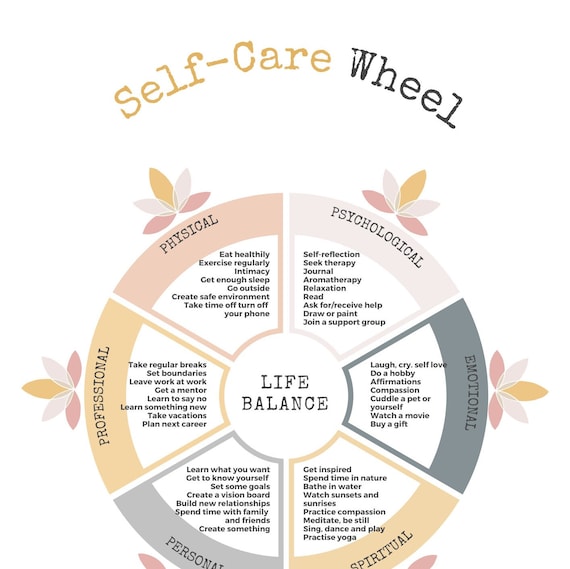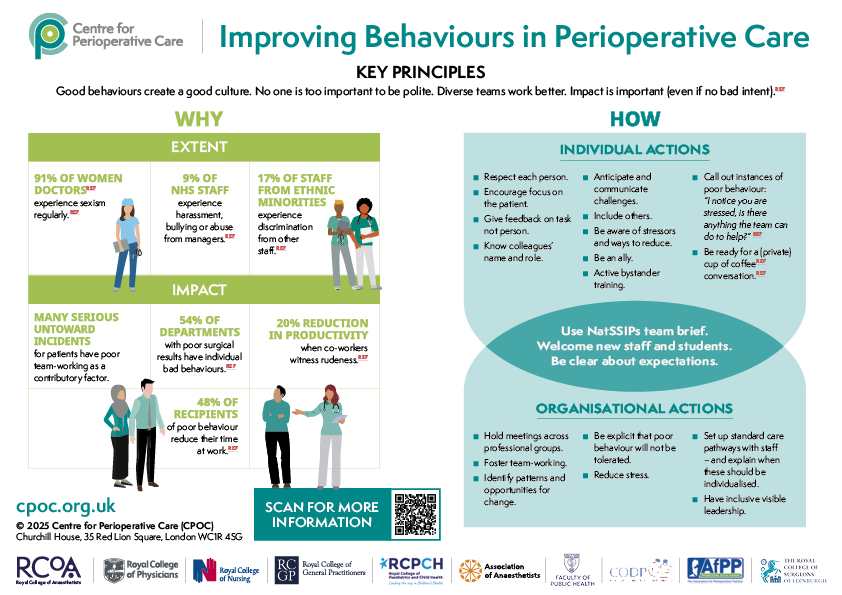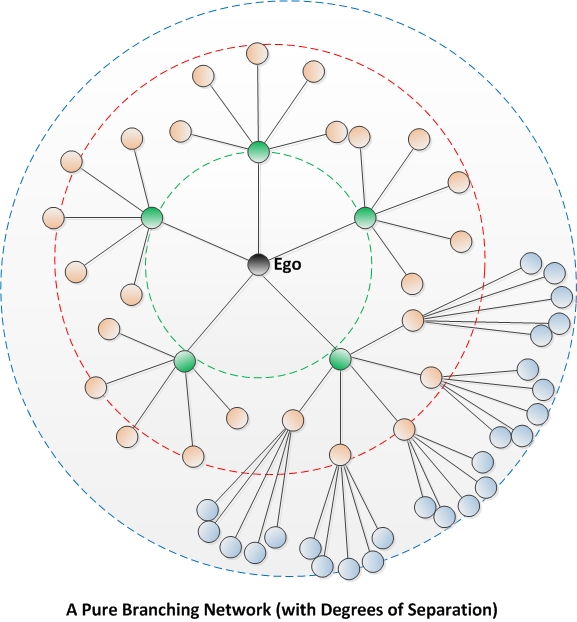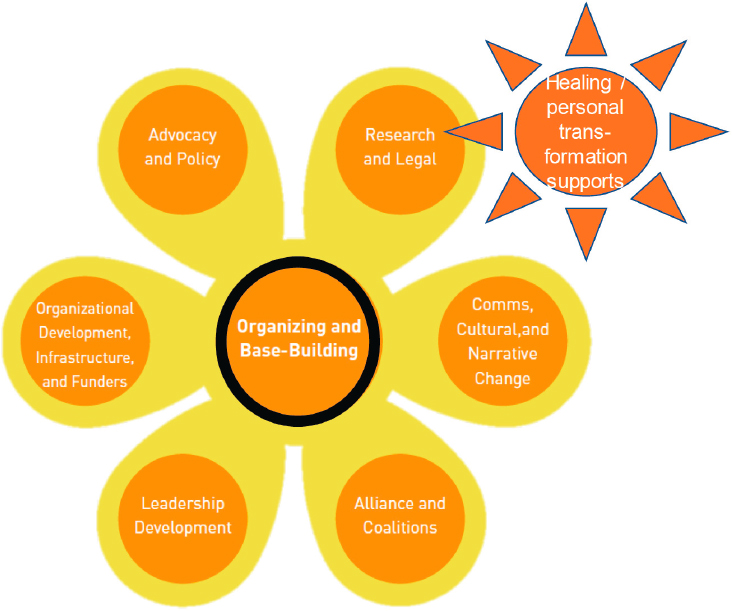Healing and Rebuilding: Navigating Workplace Trauma While Charting Your Career Exit Strategy
A comprehensive guide to recovery, renewal, and strategic transition
I've been there before—trapped in a workplace that slowly chipped away at my confidence, health, and sense of self. Workplace trauma is real, and its effects can be devastating when left unaddressed. Whether you're experiencing toxic leadership, bullying, discrimination, or crushing stress levels, the journey to healing while planning your exit requires both courage and strategy.
In this guide, I'll walk you through the process of healing from workplace trauma while simultaneously developing a thoughtful career exit strategy. The goal isn't just to escape—it's to recover, rebuild, and create a foundation for future professional success that isn't shadowed by past experiences.

Throughout this journey, I'll share how visualization tools like PageOn.ai can help you map your experiences, plan your exit, and create powerful visual narratives that support your healing process. Let's begin the path toward recovery and renewal together.
Understanding Workplace Trauma and Its Impact
Workplace trauma doesn't always arrive in dramatic moments—often it's the slow accumulation of harmful experiences that creates lasting damage. I've found that recognizing these patterns is the first step toward healing.
Common Forms of Workplace Trauma
- Toxic Leadership: Managers who use fear, manipulation, or public humiliation as motivational tools
- Workplace Bullying: Persistent negative behavior targeted at specific individuals
- Discrimination: Unfair treatment based on protected characteristics like race, gender, age, or disability
- Chronic Stress: Unreasonable deadlines, unsustainable workloads, or constant crisis management
- Organizational Betrayal: When trusted institutions fail to protect employees from harm
How Trauma Manifests
The impact of workplace trauma extends across multiple dimensions of our lives. Understanding these manifestations can help validate your experience and identify areas needing attention:
The Challenge of Healing While Planning Exit
When we're still in a traumatic environment, our bodies remain in survival mode, making healing particularly challenging. I've experienced firsthand how this creates a difficult paradox: you need mental clarity to plan your exit effectively, but the ongoing trauma clouds your judgment and depletes your energy.

The risk of carrying unaddressed trauma to new opportunities is significant. Without proper processing, we can develop maladaptive behaviors like hypervigilance, distrust of leadership, or difficulty setting boundaries in new workplaces. This is why I recommend using visualization tools to gain clarity.
Visualizing Your Trauma Patterns
I've found that mapping out trauma triggers and responses can provide valuable perspective. PageOn.ai's AI Blocks feature allows you to create visual representations of your specific situation, helping identify patterns that might otherwise remain invisible.
flowchart TD
A[Workplace Trigger] -->|Activates| B[Trauma Response]
B --> C{Response Type}
C -->|Fight| D[Confrontation/Conflict]
C -->|Flight| E[Avoidance/Withdrawal]
C -->|Freeze| F[Paralysis/Inaction]
C -->|Fawn| G[People-Pleasing]
D & E & F & G --> H[Impact on Well-being]
H --> I[Recognition & Awareness]
I --> J[Healing Intervention]
J --> K[New Coping Strategy]
K --> L[Improved Response]
By visualizing these patterns, I've been able to gain distance from my experiences and begin to see them as responses to abnormal situations rather than personal failings. This perspective shift is crucial for healing while still navigating difficult work environments.
Creating a Safe Inner Space for Healing
When the external environment remains challenging, developing internal resources becomes essential. I've learned that creating a safe inner space allows healing to begin even while still working in a difficult situation.
Mindfulness Practices for Triggering Moments
I've found that simple grounding techniques can make a tremendous difference during difficult workplace moments. These practices help regulate your nervous system and maintain presence:
5-4-3-2-1 Technique
Name 5 things you can see, 4 things you can touch, 3 things you can hear, 2 things you can smell, and 1 thing you can taste.
Box Breathing
Inhale for 4 counts, hold for 4, exhale for 4, hold for 4. Repeat as needed to regulate breathing and calm your system.
Body Scan
Mentally scan from head to toe, noticing tension and consciously releasing it. Can be done discreetly at your desk.
Establishing Healthy Boundaries
Setting boundaries becomes especially important during the transition period. I've had to learn that boundaries aren't selfish—they're necessary for survival in toxic environments. Some effective boundaries I've implemented include:
flowchart TD
A[Identify Your Limits] --> B[Communicate Clearly]
B --> C[Maintain Consistency]
C --> D[Address Violations]
D --> E[Adjust as Needed]
subgraph "Types of Boundaries"
F[Time Boundaries]
G[Emotional Boundaries]
H[Information Boundaries]
I[Physical Boundaries]
end
A --> F & G & H & I
For me, limiting after-hours communication and being selective about which meetings truly required my presence were transformative boundaries that protected my energy while planning my exit.
Strategic Self-Care Routines
I've learned that effective self-care during workplace trauma must be strategic and consistent. It's not just about occasional treats but building sustainable practices that replenish depleted reserves.

Challenging Negative Thought Patterns
Toxic workplaces often implant destructive thought patterns that persist even after we leave. I've found that identifying and challenging these thoughts is essential for healing. Common patterns include:
| Negative Thought Pattern | Challenge Strategy |
|---|---|
| "I'm not good enough to succeed elsewhere." | Collect evidence of your accomplishments and skills, regardless of recognition. |
| "All workplaces are equally toxic." | Research companies with positive cultures and speak with employees who've had different experiences. |
| "I should have handled things differently." | Recognize you did your best with the resources available at the time. |
| "My work defines my worth." | Reconnect with non-work identities and values that define you beyond professional roles. |
Using effective communication techniques to reframe these thoughts has been transformative in my healing journey. I've learned to recognize when my inner dialogue reflects the toxic messaging of my workplace rather than reality.
Personalized Healing Visualizations
I've discovered that creating visual affirmations using PageOn.ai's Vibe Creation feature helps reinforce positive self-messaging. These personalized mantras, when visualized with calming colors and imagery, become powerful tools for rewiring neural pathways affected by workplace trauma.
Strategic Career Exit Planning While Healing
Planning your exit while still healing requires a delicate balance. I've learned that a methodical approach helps manage overwhelm and ensures you don't jump from one unhealthy situation to another.
Crafting a Timeline-Based Exit Strategy
When I began planning my exit, I found that breaking the process into manageable phases helped reduce anxiety and create clarity. A phased approach allows you to balance immediate well-being with long-term career goals.
gantt
title Exit Strategy Timeline
dateFormat YYYY-MM-DD
section Assessment
Evaluate Financial Needs :a1, 2023-01-01, 30d
Document Accomplishments :a2, after a1, 21d
Identify Transferable Skills :a3, after a2, 14d
section Preparation
Update Resume/Portfolio :p1, after a3, 21d
Research Target Companies :p2, after p1, 30d
Network Building :p3, 2023-01-15, 90d
section Job Search
Apply to Positions :j1, after p2, 60d
Interview Preparation :j2, after j1, 30d
section Transition
Notice Period :t1, after j2, 14d
Knowledge Transfer :t2, after t1, 14d
Self-Care & Celebration :t3, after t2, 7d
I've found that this structured approach helps maintain focus during emotionally challenging periods. It also allows you to adjust timelines as needed based on your healing progress and financial situation.
Identifying Transferable Skills and Strengths
Despite workplace trauma, you've likely developed valuable skills and strengths—sometimes precisely because of the challenging environment. I've learned to recognize these resilience-based competencies:
Using effective work planning strategies to document these strengths has been invaluable for rebuilding my professional confidence. I've learned that the skills developed through adversity often become our greatest professional assets.
Researching Psychologically Safe Environments
After experiencing workplace trauma, I became determined to find an environment that prioritized psychological safety. Here are key indicators I've learned to look for:
Cultural Indicators
- Transparent communication about challenges
- Leaders who admit mistakes
- Regular solicitation and implementation of feedback
- Celebration of diverse perspectives
- Low turnover rates and long-tenured employees
Research Methods
- Glassdoor reviews (look for patterns, not outliers)
- LinkedIn connections who formerly worked there
- Industry reputation and awards
- Direct questions during interviews about culture
- Observe how interviewers treat each other
I've found that using PageOn.ai's Deep Search functionality to research potential employers helps uncover valuable insights about company culture that might not be immediately apparent from their marketing materials.
Building Financial Safety Nets
Financial security provides options and reduces pressure during your transition. I've learned that creating multiple layers of financial protection is essential:
Having financial breathing room allowed me to make decisions based on well-being rather than desperation. Even small steps toward financial security can significantly reduce the stress of career transitions while healing from workplace trauma.
Rebuilding Professional Identity and Confidence
Workplace trauma often damages our professional self-image and confidence. I've discovered that deliberately reconstructing these aspects is essential for long-term career success after trauma.
Separating Self-Worth from Toxic Messaging
One of the most insidious effects of workplace trauma is how it can distort our sense of professional value. I've learned several techniques to disentangle my self-worth from toxic workplace messaging:
Identity Reclamation Exercise
This exercise helped me distinguish between external messaging and my authentic professional identity:
- List all negative messages received in your toxic workplace
- For each message, write evidence that contradicts it from your work history
- Create "I am" statements that reflect your authentic professional qualities
- Visualize these statements using PageOn.ai to create affirmation cards
- Review these visualizations daily to reinforce your reclaimed identity
This process helped me recognize how workplace trauma had created a distorted professional self-image that didn't align with my actual capabilities and contributions.
Redefining Your Professional Narrative
After experiencing workplace trauma, I found it essential to consciously craft a new professional narrative—one that acknowledges challenges while emphasizing growth and resilience. This narrative becomes crucial during networking and interviews.
flowchart LR
A[Past Experience] --> B{Narrative Transformation}
B -->|Challenge Framing| C[Growth Opportunity]
B -->|Skill Highlighting| D[Competency Development]
B -->|Value Alignment| E[Clarified Priorities]
C & D & E --> F[Future Opportunity]
style A fill:#f9d5a7,stroke:#ff8000
style B fill:#ffe0b2,stroke:#ff8000
style C fill:#e6f7ff,stroke:#1890ff
style D fill:#e6f7ff,stroke:#1890ff
style E fill:#e6f7ff,stroke:#1890ff
style F fill:#d4edda,stroke:#28a745
I've found that storytelling techniques can be particularly effective when reframing challenging experiences. By focusing on problem-solving, adaptation, and lessons learned, I've been able to transform potentially negative interview topics into demonstrations of resilience and growth.
Addressing Employment Gaps or Challenges
Workplace trauma can sometimes lead to performance issues, gaps in employment, or premature departures. I've developed strategies for addressing these situations honestly while maintaining professional boundaries:
| Challenge | Professional Framing | Sample Language |
|---|---|---|
| Short tenure | Cultural misalignment | "I realized the company's values didn't align with my professional priorities, so I made a strategic decision to seek a better fit." |
| Employment gap | Professional development period | "I took time to invest in my professional development, completing certifications and projects that enhanced my skills in [relevant area]." |
| Performance issues | Environmental constraints | "Despite challenging circumstances, I learned valuable lessons about adapting to different management styles and communicating needs effectively." |
These approaches allow for honesty without oversharing or speaking negatively about former employers. I've found that most interviewers respect candidates who can discuss challenges professionally.
Vetting Potential Workplaces
After experiencing workplace trauma, I became much more deliberate about assessing potential employers. I developed a systematic approach to evaluating psychological safety during the interview process:

Using PageOn.ai's AI Blocks, I've created visual representations of my career journey that highlight growth and resilience rather than trauma. These visualizations help me maintain perspective during challenging moments in the job search process.
I've learned that rebuilding professional identity after workplace trauma is not about erasing difficult experiences but about integrating them into a narrative of growth and resilience that honors your journey while opening doors to healthier future opportunities.
Creating Support Systems During Transition
Healing from workplace trauma while planning a career exit isn't something to tackle alone. I've found that intentionally building support systems makes the journey more manageable and increases the likelihood of successful transitions.
Identifying Professional Support
Different types of professional support serve different needs during this challenging period. I've benefited from working with:
mindmap
root((Support Network))
Therapists
Trauma-informed
Workplace specialists
CBT practitioners
Career Coaches
Resume experts
Interview preparation
Salary negotiation
Mentors
Industry insiders
Former managers
Senior colleagues
Communities
Professional groups
Healing circles
Online forums
Each type of support offers unique value. Therapists help process emotional trauma, career coaches provide practical guidance, mentors offer industry perspective, and communities provide validation and shared experience.
Building a Network of Allies
I've learned that carefully cultivating relationships with people who understand workplace trauma can provide essential emotional support and practical assistance during career transitions.
Types of Allies in Career Transition
Internal Allies
- Trusted colleagues who understand the environment
- Supportive managers from other departments
- HR professionals with trauma awareness
- Former employees who successfully transitioned
External Allies
- Industry connections outside your company
- Former colleagues in new organizations
- Professional association members
- Alumni networks from education institutions
When dealing with creative burnout from a toxic work environment, I found that having allies who understood my experience without requiring extensive explanation was invaluable. These relationships provided both emotional support and practical networking opportunities.
Finding Healing Communities
Communities of others who have experienced workplace trauma can provide validation, perspective, and practical strategies. I've found these communities in various forms:
I've found that these communities provide a sense of belonging and understanding that's difficult to find elsewhere. They help normalize experiences that can otherwise feel isolating and shameful.
Setting Communication Boundaries
Managing relationships with current and former colleagues requires thoughtful boundaries. I've developed several strategies that protect my well-being while maintaining professionalism:
With Current Colleagues
- Limit personal disclosures about future plans
- Redirect trauma-triggering conversations
- Maintain professional demeanor despite internal distress
- Document interactions with problematic individuals
- Establish clear communication channels and hours
With Former Colleagues
- Be selective about maintaining connections
- Limit discussions about former workplace
- Focus conversations on future opportunities
- Set boundaries around venting or gossip
- Consider timing of social media connections
Using PageOn.ai to map my support network has given me visual clarity about which relationships nurture my healing and which might hinder it. This visualization helps me make intentional decisions about where to invest my limited emotional energy during transition periods.

I've learned that being intentional about support systems isn't selfish—it's a necessary component of healing while planning a career transition. The right support network can make the difference between simply surviving a toxic workplace and thriving in your next opportunity.
Moving Forward: Integration and Growth
The journey doesn't end when you leave a toxic workplace. I've discovered that intentional integration of the experience is essential for long-term growth and preventing similar situations in the future.
Preventing Trauma Patterns in New Opportunities
Unaddressed workplace trauma can create patterns that follow us to new environments. I've developed several strategies to break these cycles:
flowchart TD
A[Identify Trauma Responses] --> B[Recognize Triggers]
B --> C[Develop New Response Patterns]
C --> D[Practice in Safe Settings]
D --> E[Implement in New Workplace]
E --> F[Seek Feedback]
F --> G[Adjust as Needed]
G --> B
H[Self-Awareness] --> A
I[Support Systems] --> C
J[Professional Help] --> C
K[Boundaries] --> E
L[Communication Skills] --> E
I've found that using visual storytelling techniques to map these patterns helps me recognize when I'm falling into old habits. Visualization creates distance and perspective that's difficult to achieve when caught in emotional reactions.
Recognizing and Celebrating Healing Milestones
Healing isn't linear, but it does progress. I've learned to identify and celebrate significant milestones along the journey:
Each of these milestones represents significant internal work and deserves acknowledgment. I've found that celebrating these achievements, even privately, reinforces progress and builds momentum.
Incorporating Lessons into Future Decisions
Workplace trauma, while painful, often contains valuable lessons that can inform future career choices. I've learned to extract these insights without remaining stuck in the pain:
Transformative Lessons from Workplace Trauma
Values Clarification
Difficult experiences often crystallize what truly matters to us professionally. I now have greater clarity about the values I need to see demonstrated in any workplace culture.
Red Flag Recognition
I've developed a finely tuned radar for early warning signs of toxic dynamics, allowing me to make more informed decisions during interviews and early employment periods.
Boundary Development
Through painful experience, I've learned which boundaries are non-negotiable for my wellbeing and how to communicate them effectively in professional contexts.
Resilience Building
Surviving workplace trauma has built internal resources that make me more adaptable and resilient when facing future challenges.
Becoming an Advocate for Healthy Workplace Cultures
Many who heal from workplace trauma find meaning in advocating for healthier environments. I've discovered several ways to channel my experience into positive change:

Using PageOn.ai's Agentic capabilities, I've transformed my healing journey into a visual narrative that helps others recognize and address workplace trauma. This visualization serves as both a personal reflection tool and, when appropriate, a resource for selective sharing with others on similar journeys.
I've learned that true healing isn't just about escaping a toxic situation—it's about integrating the experience in ways that foster growth, prevent future harm, and potentially contribute to positive change for others facing similar challenges.
Transform Your Healing Journey with PageOn.ai
Visualize your path to recovery, map your support systems, and create powerful narratives that help process workplace trauma while planning your career transition.
Start Creating with PageOn.ai TodayConclusion: Your Path Forward
Healing from workplace trauma while planning a career exit is one of the most challenging professional journeys we can face. Throughout this guide, I've shared strategies that helped me navigate this complex path—from understanding the impact of trauma to creating safe spaces, planning strategic exits, rebuilding professional identity, establishing support systems, and integrating lessons for future growth.
Remember that healing is not linear, and each person's journey is unique. Be patient with yourself during this process and celebrate even small steps forward. The skills and resilience you develop through this experience will serve you throughout your career.
As you move forward, consider how visualization tools like PageOn.ai can support your healing and transition. Creating visual representations of your experiences, support networks, and future plans can provide clarity during confusing times and help transform painful experiences into meaningful growth.
Your story doesn't end with workplace trauma—it evolves through healing, transformation, and the creation of new possibilities aligned with your authentic professional self. Trust the process, honor your journey, and know that healthier work environments do exist where your talents and contributions will be valued.
You Might Also Like
Visualizing Fluency: Transform English Learning for Non-Native Speakers | PageOn.ai
Discover innovative visual strategies to enhance English fluency for non-native speakers. Learn how to transform abstract language concepts into clear visual frameworks using PageOn.ai.
Mastering Visual Harmony: Typography and Color Selection for Impactful Presentations
Learn how to create professional presentations through strategic typography and color harmony. Discover font pairing, color theory, and design principles for slides that captivate audiences.
The Art of Instant Connection: Crafting Opening Strategies That Captivate Any Audience
Discover powerful opening strategies that create instant audience connection. Learn visual storytelling, interactive techniques, and data visualization methods to captivate any audience from the start.
Mastering FOMO Psychology: Creating Irresistible Business Pitch Strategies | PageOn.ai
Learn how to leverage FOMO psychology in your business pitches to drive urgent action. Discover proven strategies for creating authentic scarcity, exclusivity, and urgency that converts.
